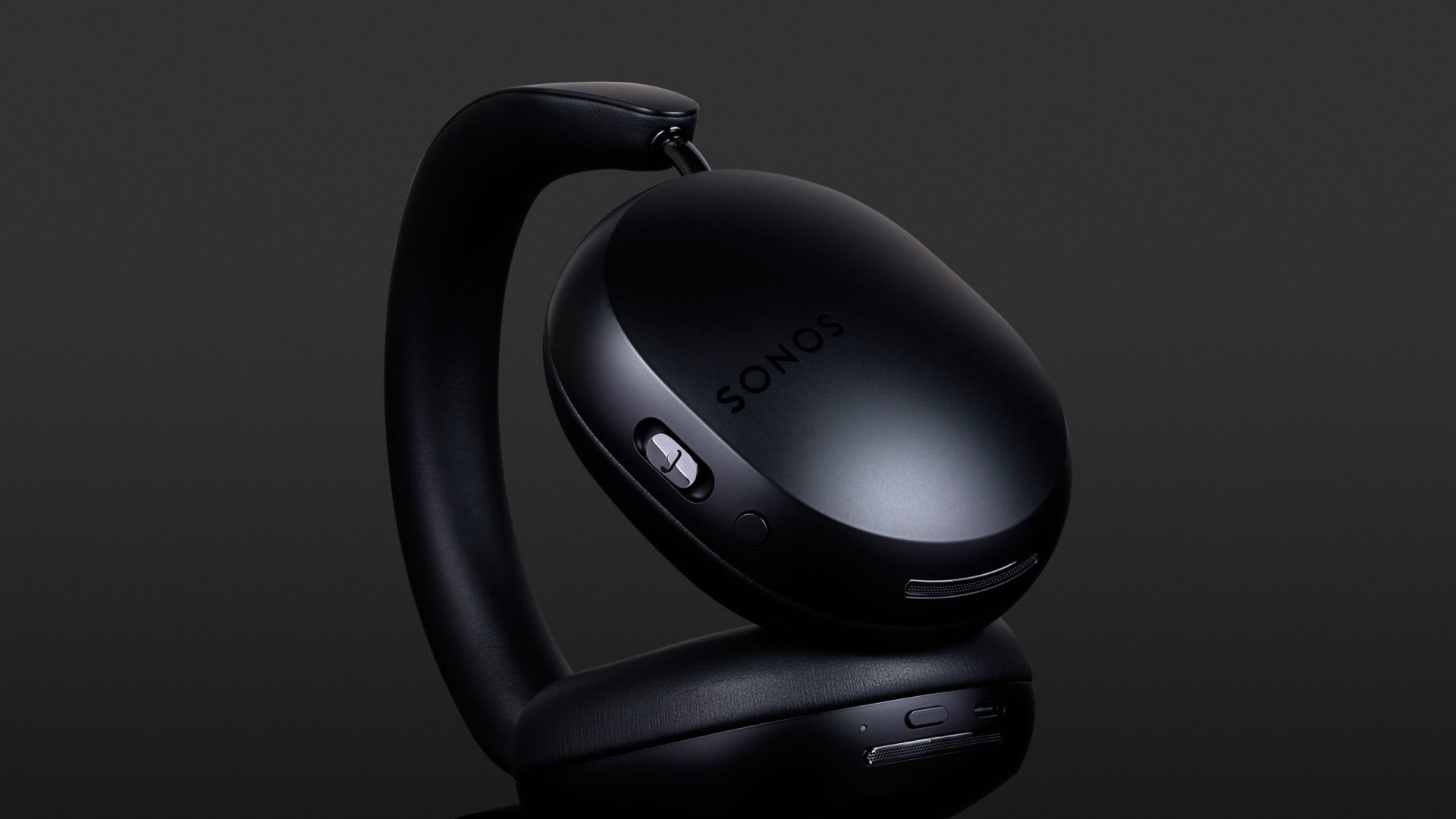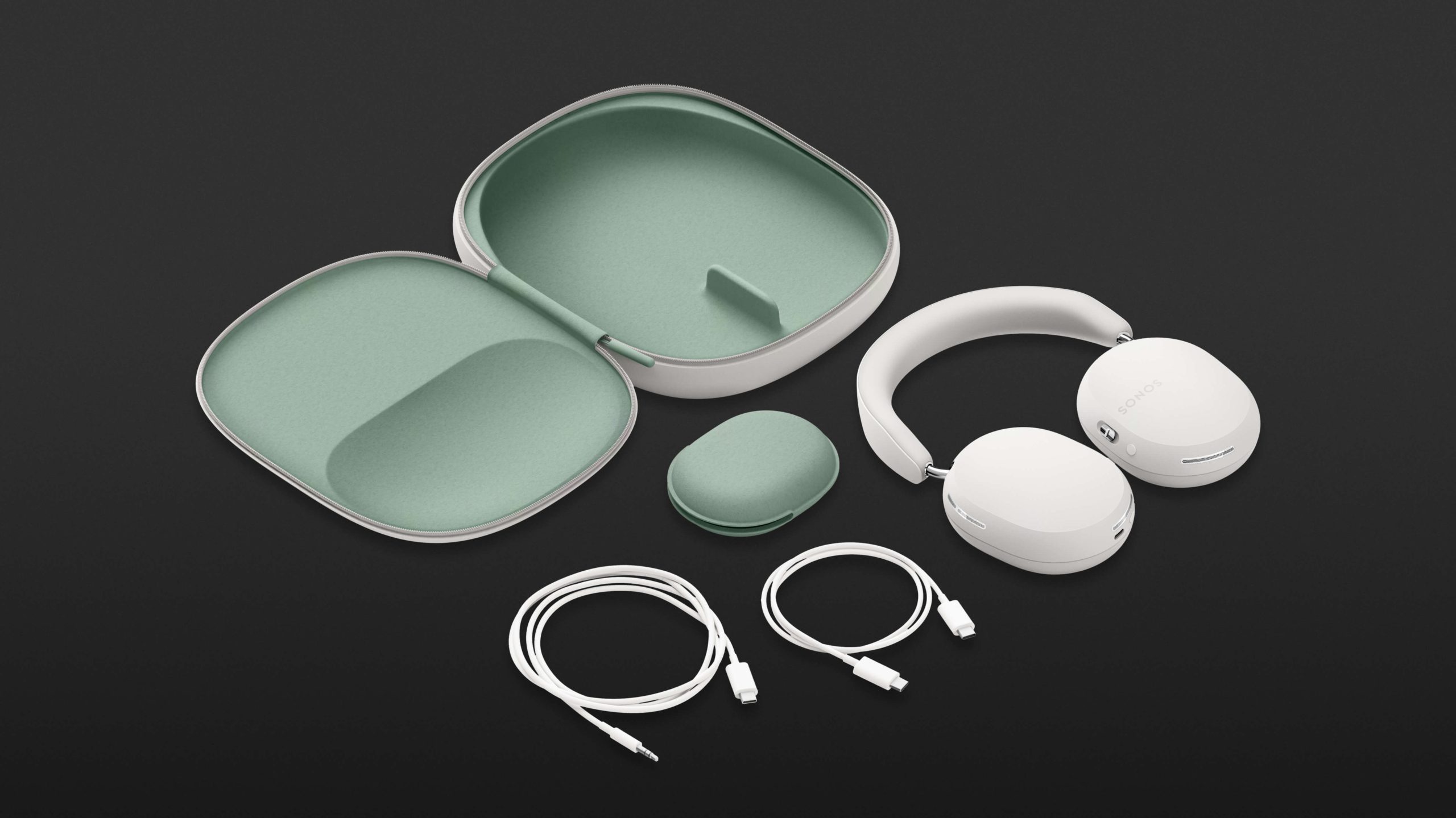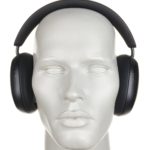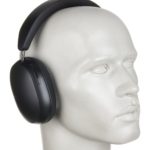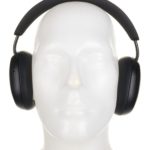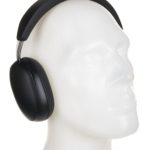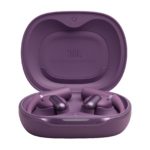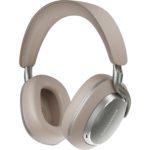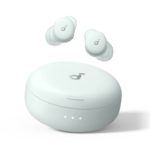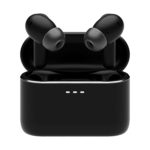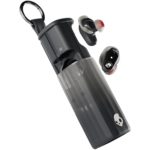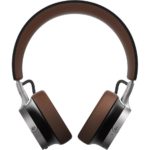Sonos set new standards with the Ace: sound, function, comfort and the option of transferring impressive cinema sound to the headphones using a Sonos soundbar have given the multiroom expert a top position in the premium headphones segment of the market from the get-go.
- very good sound
- very good noise cancelling and transparency mode
- high wearing comfort
- Good battery life
- BT 5.4 and soon LE audio-capable (Qualcomm Snapdragon Sound)
- Cinema sound via Sonos soundbar
- Cinema sound requires additional Sonos hardware
- Expensive to purchase for new customers (Sonos soundbar)
- Heat build-up at higher temperatures
It has been the talk of the town for some time: Sonos wants to release headphones. After five years of rumours and gazing into our crystal ball, the time has finally come: the Sonos Ace has arrived, promising state-of-the-art technology and an unparalleled sound experience. But what can the Ace do better than the rest and how will Sonos integrate headphones into its multi-room audio system? These are just two of the most exciting questions that the American manufacturer has answered, at least in part, with the release of the Ace.
Table of contents
- What can the Sonos Ace do?
- What sets the Sonos Ace apart from the competition?
- First impressions
- Bluetooth & USB audio
- How to control the Sonos Ace
- How the ANC and transparency mode works
- Connecting to the Sonos TV setup
- How good does the Sonos Ace sound?
- The Sonos Ace in practice
- Sonos Ace compared to Apple etc.
- Conclusion

What can the Sonos Ace do? The facts
The Sonos Ace offers active noise cancelling and a transparency mode, supports multipoint, transmits via Bluetooth 5.4, and will soon be LE audio-capable. These headphones can communicate digitally or analogue via USB audio and have a practical battery life of 30 hours. So far, so good, especially as the listed price of 499 euros positions the Ace in a strong field of competitors, such as Apple AirPods Max, Bowers & Wilkins Px7 S2e and Px8, Sennheiser Momentum 4 Wireless, but also the cheaper Sony WH-1000XM5.
What sets the Sonos Ace apart from the competition?
Despite all expectations, the Sonos Ace cannot be integrated into a classic Sonos multiroom system. Admittedly, what we describe later in this review will cost the user a lot, but it will be worth it. However, the Sonos Ace can be paired with Sonos soundbars and play impressive cinema sound directly into your ears at the touch of a button – and that’s what makes these headphones different from the competition, but first things first…
First impression
The Sonos Ace arrives in a felt-covered hard case made of recycled plastic, which opens with a zip. The materials look elegant and designed for durability, as you would expect from headphones in the 500 euro price bracket.
- The Sonos Ace scope of delivery.
The ear pads are made of memory foam, are covered in artificial leather and can be replaced. The replacement pads are available in the Sonos shop for 49 euros a pair. The driver capsules have a matt coating, and touching them does not leave excessive fingerprints. The Ace can be easily adjusted to suit the shape of your head using anodised guiders that are the same colour as the housing. The headband is well-padded on the underside and is also trimmed with artificial leather. The wearing comfort of these 312-gram headphones is very good, even when worn for long periods of time, the Sonos Ace are rather comfortable and not very annoying, but at higher temperatures, you might wish they had textile ear pads like the ones on the AirPods Max, although in comparison these are significantly heavier.
Bluetooth connection plus USB audio
The on/off switch, which is also responsible for Bluetooth pairing, is located on the bottom right-hand side. Once a connection has been memorised, it is spontaneously restored as soon as the “remote station” is active. During our test, the Ace was not yet able to establish two connections via Multipoint. This should be made possible with an update.
It is advisable to download the latest Sonos app, even if you don’t have a Sonos system, as only then will you have access to all functions.
The range corresponded to the usual values of approx. nine metres indoors with a wall in between and approx. 15 metres outdoors. The Ace offers SBC, AAC and aptX Lossless as Bluetooth codecs. LC3 and Auracast are to be added at a later date.
The ability to provide lossless audio streams via a USB interface has now become standard. This means that the Sonos Ace can also be used as a latency-free audio system for media production. Trials with Apple’s GarageBand were successful. Sonos also supplies a second USB cable, but on the end, there is not a USB-C but a mini jack plug so you can connect the Ace to analogue sources. This means that the Sonos headphones can also be used with in-flight entertainment on long-haul flights, for example, even with noise cancelling switched on.
Controls on the headphones and in the app
We really liked the controls on the headphones. As already mentioned, there is a power button on the left-hand side, and this is also used for pairing with Bluetooth devices. On the right-hand side, there is a slider that always returns to the centre position. This allows you to intuitively adjust the volume. Holding it for a longer period of time causes a constant change, while a short tap changes the volume gradually. Press the control once to pause the music, and press it several times to skip to the next or previous track. Below this toggle switch is a button for activating the voice control function and noise cancellation. The latter switches between Active Noise Cancelling and Transparency mode and – if desired – can also be set up via the app to switch off the ANC completely, which can save power if necessary.
Noise cancelling and aware mode are top of the list
There is no audible difference in sound between the three listening modes. But they all excelled in our tests. The external attenuation when ANC is activated is full band and leaves no gaps for background noise.
Aware mode was just as convincing and is the same as what is also called Transparency mode elsewhere. Our previous transparency champion – the AirPods Max – is at least no longer the only winner here. With the Sonos Ace, sounds are perceived one-to-one through the headphones without any annoying noise, and similarly, the noise of everyday life is faded out to a high degree via the ANC. Very good!
Connection with the Sonos TV setup
Let’s get to the “Unique Selling Point” of the Sonos Ace. These headphones can be integrated into a TV setup via the Sonos Arc soundbar and thus transmit an acoustic cinema experience from the TV. The prerequisite is a TV with an HDMI Arc return channel and, of course, the ability to play surround sound formats. For example, I experienced the stadium atmosphere of the Cup final on ARD via Sonos Ace as if I were sitting in the stadium. And, of course, I enjoyed a few episodes of my favourite Netflix series with the Ace. More on this in the Sound chapter.
The Arc soundbar first needs to be linked to the Sonos Ace. If there is a sound signal on the soundbar via a TV, this can be transferred to the Sonos Ace by pressing and holding the toggle switch. The TV sound then resides in the headphones, ideally as surround cinema sound. Later, the Beam 1st and 2nd Gen soundbars and the Sonos Ray will also be able to transfer surround formats from the TV to the Sonos Ace. As the Ace will be Auracast-capable, you will also be able to set up exciting home theatre scenarios such as “Silent Cinema Parties” or open-air cinema events with perfect sound for every single viewer.
[UPDATE]
The Ace now supports audio swapping with the Arc soundbar, as well as the smaller and cheaper Beam and Ray. We successfully tested this with a 1st generation Beam. Once set up in the Sonos app, the TV sound is routed to the headphones, but the soundbar is also muted. It was a little confusing that the app identified our Beam as an Arc soundbar. However, the Ace headphones were able to connect to the Beam for the audio swap without any problems. As the first generation Beam was not yet capable of playing Dolby Atmos, our test setup with the Ace headphones also failed to do so. However, Dolby Digital and Dolby Digital 5.1 are supported, and we were also able to activate head tracking here. This means that you can now buy a set of Beam (Gen 2) headphones with the same immersive listening experience for the price of the Arc. We were unable to test this on the Ray due to the lack of a test unit. However, with Dolby Digital and DTS Digital Surround, films in the most common surround formats should work on the Ace.
- A Sonos soundbar is essential if the headphones are to be used to their full potential. This picture shows the Sonos Ace and the Arc Soundbar.
How good do the Sonos Ace sound?
We tested the Sonos Ace in various listening situations: on the go, at home during everyday tasks such as vacuuming or mowing the lawn, on the sofa while enjoying music and in front of the TV in combination with an Arc soundbar for both stereo and surround sound via TV or Apple TV streams. High-res audio files were also played through the Ace via USB-C as lossless data transfer. The best possible codec, such as aptX Lossless (Android) or AAC (iOS) was used for Bluetooth connections. With a Mac, FLAC files were played both via Bluetooth and USB audio transfer. The sources used were Spotify tracks in the highest possible quality, Apple Music content in stereo and Dolby Atmos, as well as video and TV content (stereo and surround). We listened either with noise cancelling activated or in Aware mode because when watching TV, you might also want to exchange a word or two with your partner, and this worked wonderfully with the Ace’s transparency mode.
Our general verdict first: the Ace sounded very good or great for all music genres and podcasts. The first call on my musical journey of discovery was to skim through our Spotify list. Sonos has managed to transfer the sound expertise it has developed in the loudspeaker sector to these headphones. The Sonos Ace always conjured up an optimal sound experience thanks to the seemingly permanent True Play function.
With the Ace, my all-time favourite stereo productions demonstrated a finely staggered spatiality with a clearly defined distribution of frequencies. Listening to recordings of sacred music performed in church halls was particularly enjoyable with the Sonos Ace. But current pop productions by Billie Eilish or Ed Sheeran played via Apple Music in Dolby Atmos also impressed me with their wide sound stage, very defined depth gradation and clear localisation.
The basses experienced an impressive spatial depth, especially in 3D audio productions, and the Sonos Ace was able to reproduce every syllable of a Billie Eilish song with joy.
Our home cinema listening tests then became really exciting, and among other things, led to me “hearing” one or two series a second time, and when I watched the blockbuster Dune Part 1 via Netflix, I did not remember such acoustic qualities from seeing it in the cinema. And here is another feature that we haven’t even mentioned yet: The Sonos Ace offers very accurate head tracking.
The Sonos Ace in practice
During our tests, we took the Sonos Ace with us in various everyday situations. Wearing comfort was good to very good. The Ace is one of the lighter varieties of over-ear headphones; the ear pads are comfortable and moulded to the ear very well. People who wear glasses will not experience any unpleasant pressure when wearing the Ace, and the materials of the Sonos Ace also seem to be of high quality.
Bluetooth connections were established quickly and were stable up to nine metres indoors with a wall in between and up to 15 metres outdoors. However, the range of the Sonos Ace connected to the Arc soundbar was quickly lost when leaving the room. The act of going to pick up a beer from the fridge during the football cup final was acknowledged with a sound interruption within the nine-metre radius, and reconnecting also required a “re-swap” from the soundbar sound to the headphones. Multipoint connections are not yet possible with the current system version at the time of testing, so we could not speak to their effectiveness.
The Sonos Ace can also be operated without the Sonos app. ANC and Aware mode, as well as volume settings and drive control, are still available.
The app itself requires personalisation. Various adjustments such as EQ, ANC control and, of course, pairing with a Sonos soundbar can be made.
The stated battery performance of 30 hours is realistic. If all-day playback is not enough for you, you can top up 3 more hours within 3 minutes thanks to the fast charging option. Power is only supplied via the USB-C socket. Inductive charging is not provided. In our opinion, the Sonos Ace sets a new standard when it comes to noise cancelling and Aware or Transparency mode, especially as no change in sound was noticeable, regardless of whether you shut yourself off from the outside or let outside noises through. The background noise was so low that it was never distracting.
And finally, the sound: listening to music with the Sonos Ace was simply fun thanks to the impressive sound quality. We were amazed and our ears were spoiled by the quality we were able to hear. This was especially true of the surround sound feature via the soundbar. Experiencing TV sound in the best cinema quality via headphones is quite simply great entertainment. And, of course, we also did a little bit of work in between movies. Video calls via MacBook and Google Meet, Facetime video calls or just old-fashioned telephony were possible at all times with high quality and speech intelligibility. Last but not least, I produced a short podcast using the Sonos Ace, and the microphone signal had a surprisingly usable voice signal.
A few words on the integration of the Sonos Ace into the Sonos multiroom environment at the end of our practical review. These headphones cannot be added to rooms and cannot be grouped. The stream to Sonos audio systems via Apple’s Airplay was also interrupted as soon as the Ace was selected. It was not possible to leave the TV sound signal on the soundbar and listen to the TV signal via Sonos Ace at the same time. This may be something to be criticised, but I didn’t miss the function because listening via headphones is a personal, almost intimate behaviour. It’s nobody’s business what I’m listening to. Unless you open the channel to other listeners via Auracast.
Sonos Ace compared to Apple, Bowers & Wilkins, Sony etc.
The Apple AirPods Max is the competitor that the Sonos Ace now knocks off their pedestal. The sound of the Ace was more open, wider, more immersive and more detailed, something that was evident in a 1:1 listening comparison. However, the AirPods Max is already in their fourth year, and we may be expecting the next AirPods Max generation in the autumn; however, the Sonos Ace has set a new benchmark for them to compete with. You can certainly expect Apple to come up with similar products via Apple TV and their home audio concept.
In competition with the Bowers & Wilkins Px7 S2e and Px8, Sonos also showed the British their limits in terms of sound.
The comparison with the Sony WH-1000XM5 was clearer, but of course, the price should also play a role in the argument here. At 499 euros, Sonos is already setting a benchmark. The PX7 currently costs 80 euros less, the Sony 200 euros, and if you want to utilise the full power of the Sonos Ace, you need at least one soundbar from Sonos, and if you have one, you’ll also need a subwoofer and possibly a few accessories. So spending extra money doesn’t stop with the purchase of a pair of Sonos Ace.
Conclusion
Sonos Ace was a surprise to us in an extremely positive way! The multi-room experts’ debut headphone product came up trumps with very good sound, cinema sound via Sonos soundbar, state-of-the-art Bluetooth codecs and a very elegant appearance with excellent workmanship. The high level of wearing comfort and outstanding noise cancelling, including transparency mode, make the Sonos Ace the first choice as universal everyday headphones, but also as a means of musical enjoyment. Owners of a Sonos multi-room system can look forward to cinema sound that no headphone brand has yet been able to offer. Sonos is certainly setting standards and challenging the competition. The headphone market is about to get exciting again.
Technical specifications
- Ear couplingOver-ear
- Typeclosed
- Transducer principledynamic
- Pressure averaged from big and small head587,5 g
- Weight with cable329 g
- Weight without cable313 g
- Cable length115 cm
Special features
- Available in black and white
- BT version: 5.4
- BT codecs: SBC, AAC, aptX Lossless










